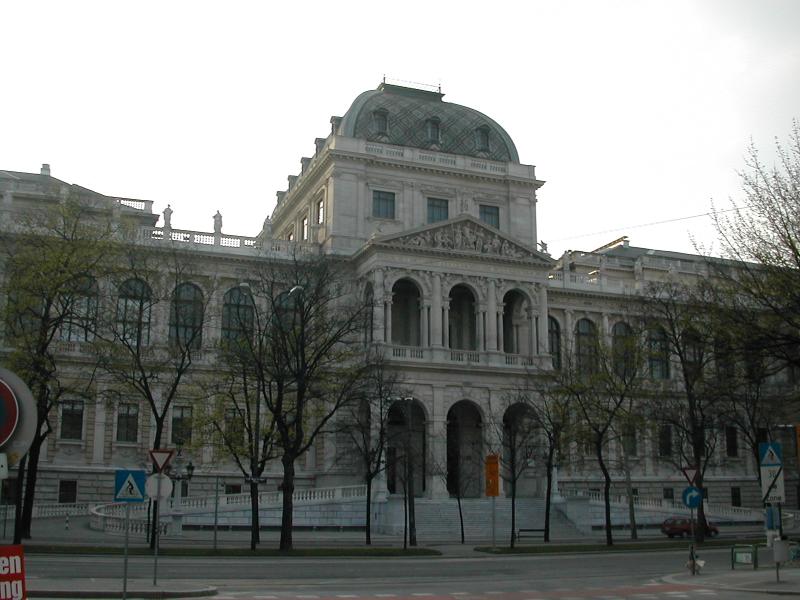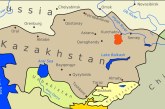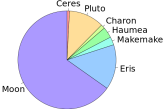
Story Highlights
- Historical event:
- 12. March 1365
- The University of Vienna is the oldest university in the German-speaking world. It was founded by Duke Rudolph IV from the House of Habsburg, and has grown into one of the biggest universities in Europe, producing 15 Noble Prize winners.
The University of Vienna (German: Universität Wien) was founded on this day 650 years ago by Duke Rudolf IV of Austria from the House of Habsburg and his brothers, Duke Albert III and Duke Leopold III (for this reason it is sometimes known as the Alma Mater Rudolfina).
Specifically, Duke Rudolf ordered that a “general and privileged studium” be established in Vienna, “according to the ordinances and customs observed first at Athens, then at Rome, and after that at Paris.” Of course, he ignored the fact that there actually never were any universities in ancient Athens or Rome.
It is the oldest university in the German-speaking world, and the third oldest in Central Europe (after the Charles University in Prague and the Jagiellonian University in Krakow). The University of Vienna was modeled after the University of Paris, and included a public library.
The founding is tied to Duke Rudolf’s political ambitions. He was married to the daughter of Holy Roman Emperor Charles IV, and sought to elevate Vienna to rival the grandeur of Prague. Indeed, the founding of an university by a non-royal was a rare event in itself.
A problem arose because Pope Urban V did not agree to ratify the deed founding the Faculty of Theology. This was probably due to pressure exerted by Emperor Charles IV, who wanted to avoid having a rival to the Charles University in Prague. Another problem was that the university also lacked suitable premises, but in 1385 it moved into a building the Duke’s College (German: Herzogkolleg) located in Postgasse in what is now central Vienna.
However, the pope eventually gave his approval in 1384, thereby granting the University of Vienna the status of a full university, including the Faculty of Catholic Theology. Although close to the Church, the medieval University of Vienna was not an ecclesiastical institution, but was given a large degree of freedom from both ecclesiastical and secular authorities.
The university soon grew into the largest one in the entire Holy Roman Empire. During the mid 15th century (the age of Humanism), it was home to over 6,000 students.
In its early years, the university was headed by a Rector, while the Magister and Doctors from the four faculties elected academic officials from their own ranks. The students had practically no power and were situated at the bottom of the hierarchy (they could file complaints or appeals only through a Magister or Doctor). All university members were divided into four Academic Nations.
The Nations were the following: Austrian (including Italy), Rhenish (western Germany and Western Europe), Hungarian (including the Slavic nations), and Saxon (northern and eastern Germany, Scandinavia, the British Isles). These Nations elected board members, who had the right to elect the Rector.
The other bodies in the frame of the university included the Consistory (consisting of the procurators of each Nation and the faculty deans) and the University Assembly (where all teachers participated).
Reformation period and the Jesuits
The rapid development of the university came to a sudden halt during the time of the Reformation, since it was considered a Papal institution, which caused it to lose prestige. Furthermore, the Siege of Vienna by Ottoman troops in 1529 also led to the decline of the institution.
At its lowest point, there were only 30 students enrolled! King Ferdinand I of Austria decided to protect the university by making its ties to the Catholic Church even stronger. In 1551 he installed the Jesuit religious order there. In 1623 Emperor Ferdinand II had the Jesuits take over teaching at the theological and philosophical faculty, allowing the university to become a Catholic stronghold for the next 150 years.
The study of Theology came to the fore, while Law and Medicine were marginalized. In addition, in line with Absolutist policies, the professors were forbidden to teach freely, but became responsible for teaching Catholic priests, doctors, civil servants, and teachers.
Re-secularization
This came to an end under Empress Maria Theresa, who put the university back under state control and allowed Protestants to enroll non-religious studies near the end of her reign. Her successor, Joseph II allowed Jews to enroll at certain faculties. Rather than training scholars, the university was now supposed to primarily train “State Servants”. Great advances were made at the Faculty of Medicine.
Further reforms were implemented in the mid 19th century, when the Philosophical Faculty achieved equal status as Theology, Law, and Medicine. New buildings were built and the university received a larger degree of academic freedom. Women were allowed to study Philosophy in 1897, Medicine in 1900, Law in 1919, Protestant Theology in 1923, and Roman Catholic Theology in 1946. The first female professor was Elise Richter. The most important reformers included Count Leo Thun-Hohenstein and Professors Franz Exner and Hermann Bonitz.
The 20th century and on
Starting in the late 1920s, the student body was gripped by anti-democratic and anti-Semitic sentiment, which led to riots and even murders of professors for such reasons. Following the German Anschluss (annexation) of Austria in 1938, a new system was introduced. Many teachers (almost 50%) and students were thrown out for political and racial reasons.
These expulsions and World War II had a devastating effect on the university, but it recovered surprisingly quickly. After the Soviets drove the Nazis out of the country near the end of World War II, the university was re-opened, with Ludwig Adamovich as the first official post-war rector. The reforms implemented in 1993 and 2002 allowed the university to regain its full legal capacity after over 250 years of state control. The number of faculties was increased to 18, and the medical faculty separated into the new Medical University of Vienna.
Today the university boasts 187 degree programs (55 bachelor, 116 master, 4 diploma, and 12 doctoral). Over 10,000 students graduate there each year. Almost 6,900 scholars are involved in the teaching and research activities of the university. Around 25% of the students and 33% of the teaching and research staff came from abroad.
The main fields of research cover a wide spectrum of subjects, but the university is most known for its Humanities faculties (particularly Linguistics and Philosophy) and for being the cradle of the Austrian School of economics. A total of 15 Nobel Prize Laureates are affiliated to the university (6 Medicine, 4 Chemistry, 2 Physics, 2 Literature, 1 Economics). The university’s library holds over 7 million books. One of the major challenges the university currently faces is simply the lack of space.




